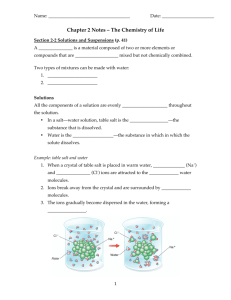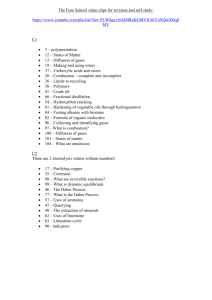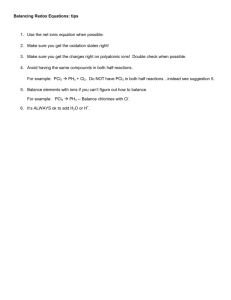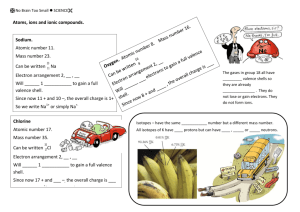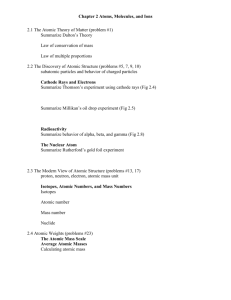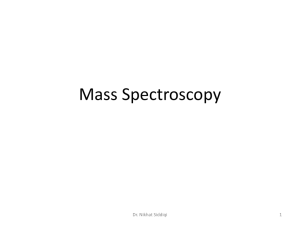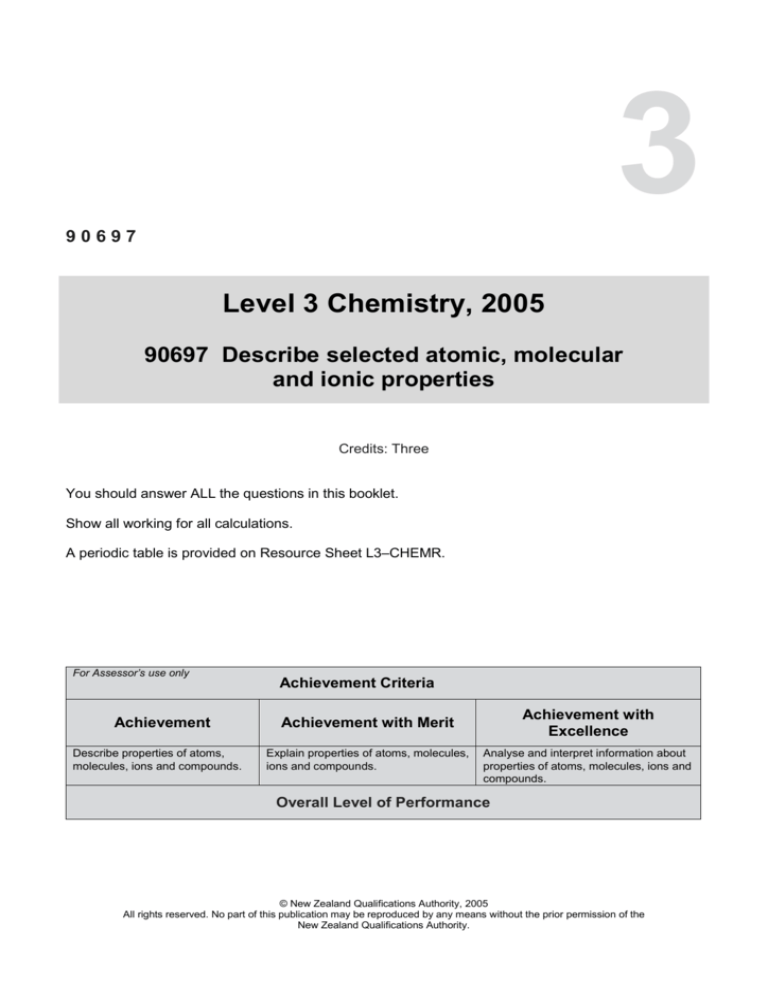
3
90697
Level 3 Chemistry, 2005
90697 Describe selected atomic, molecular
and ionic properties
Credits: Three
You should answer ALL the questions in this booklet.
Show all working for all calculations.
A periodic table is provided on Resource Sheet L3–CHEMR.
For Assessor’s use only
Achievement
Describe properties of atoms,
molecules, ions and compounds.
Achievement Criteria
Achievement with
Excellence
Achievement with Merit
Explain properties of atoms, molecules,
ions and compounds.
Analyse and interpret information about
properties of atoms, molecules, ions and
compounds.
Overall Level of Performance
© New Zealand Qualifications Authority, 2005
All rights reserved. No part of this publication may be reproduced by any means without the prior permission of the
New Zealand Qualifications Authority.
You are advised to spend 35 minutes answering the questions in this booklet.
QUESTION ONE: ATOMIC PROPERTIES
(a)
State the trend in atomic radius and in first ionisation energy (IE) down Group 2 from Be to Ca.
Give an explanation for these trends.
Trend in atomic radius from Be to Ca:
Trend in first IE from Be to Ca:
Explanation:
(b)
(i)
Write the electron configuration using s,p,d notation for
F
F–
Na+
(ii) Compare the relative sizes of the F atom and the F– ion, and explain the difference in their
radii.
(iii) Compare the relative sizes of the F– and Na+ ions, and explain the difference in their radii.
QUESTION TWO: STRUCTURE AND PROPERTIES OF COMPOUNDS
(a)
(i)
Draw Lewis diagrams for nitrate (NO3–) and iodate (IO3–) ions.
(ii)
Identify the shapes of these two ions and explain why their shapes are different.
NO3–
IO3–
(b)
Lewis diagrams of PCl3 and PCl5 are shown below.
Discuss the polarities of the PCl3 and PCl5 molecules. In your discussion consider both the
relative electronegativity of P and Cl, and the shapes of the molecules.
L3 Chemistry 2005, 90697 – page 2 of 3
QUESTION THREE: NUCLEAR REACTIONS
(a)
(i)
Write an equation for the decay of phosphorus-32 by emission of a particle.
(ii)
Complete the following equation for the decay of uranium-236.
236
(b)
U
90
Kr
+ ________ + 2 1n
Carbon-14 is a -emitter, and is used to date objects found in archaeological digs. The half-life
of carbon-14 is 5 730 years.
Calculate the fraction of carbon-14 that would remain in a sample of wood 28 650 years old.
QUESTION FOUR: COLOURFUL CHEMICALS
(a)
Give the colour of the following ions
Mn2+(aq)
MnO42–(aq)
Cr3+(aq)
(b)
Describe the colour changes that occur in the following reactions. Link the observations to the
reactants and products, and write a balanced chemical equation for each reaction.
(i)
A solution of sodium thiocyanate, NaSCN, is added to a solution of iron(III) nitrate.
Equation:
(ii)
Concentrated hydrochloric acid is carefully added to a solution of copper(II) sulfate.
Equation:
L3 Chemistry 2005, 90697 – page 3 of 3


